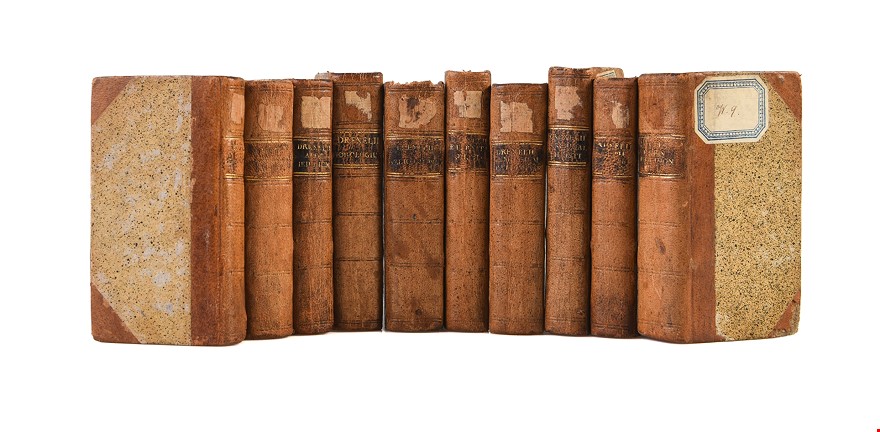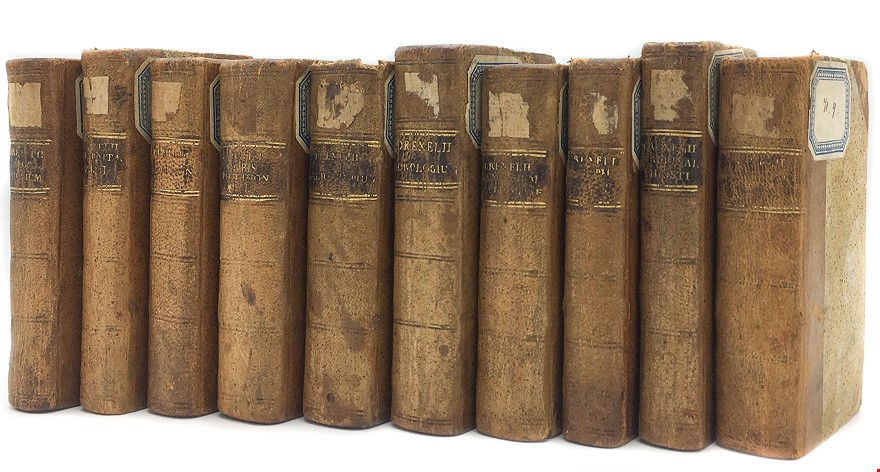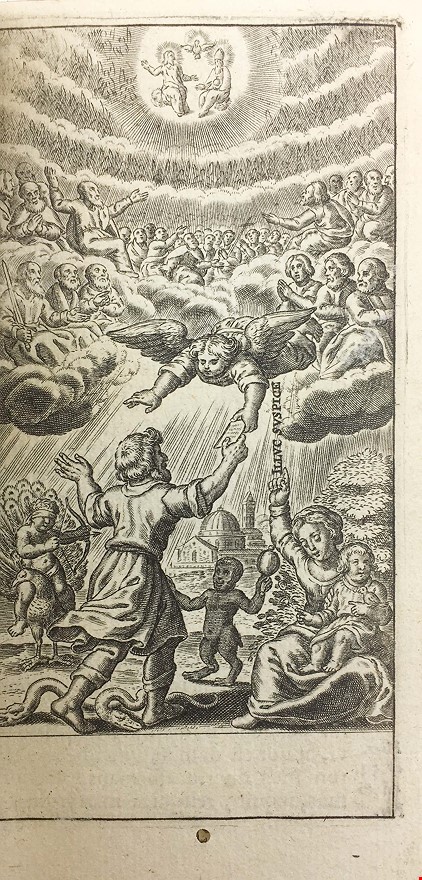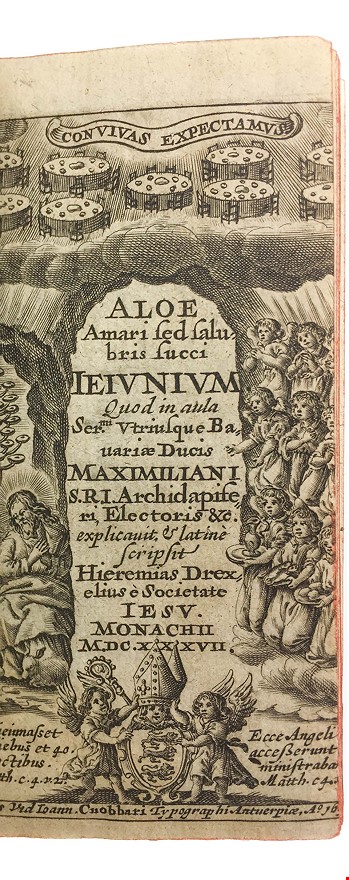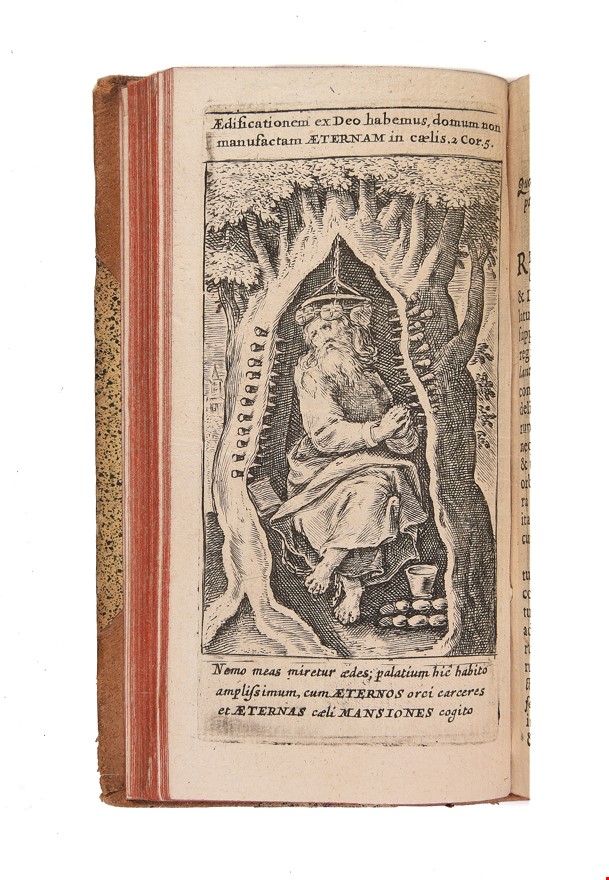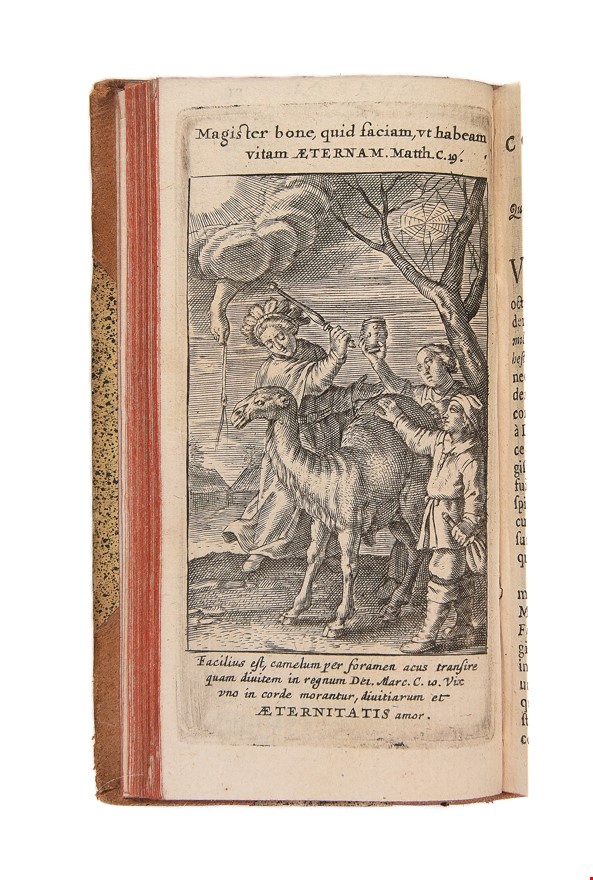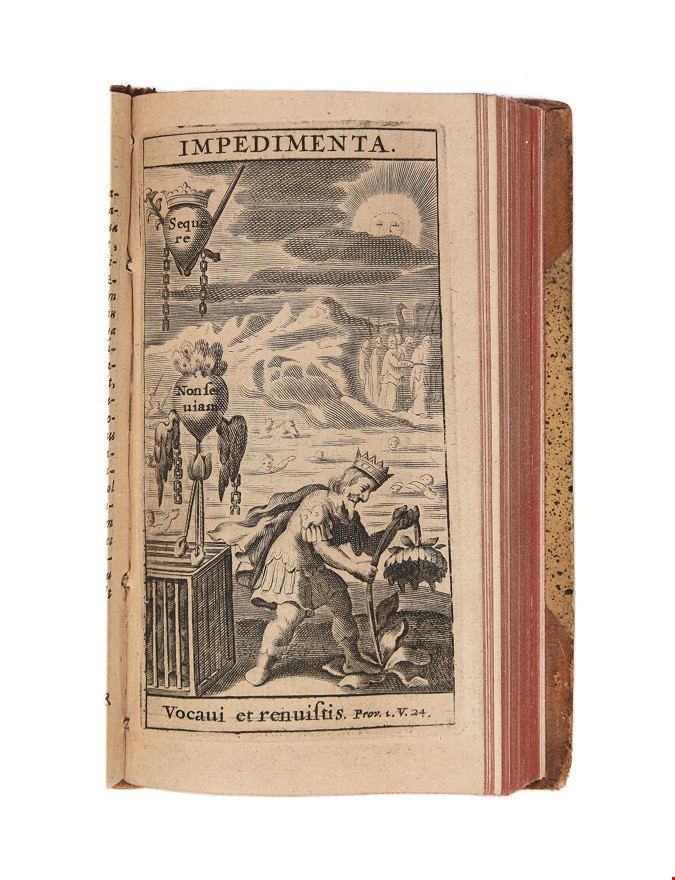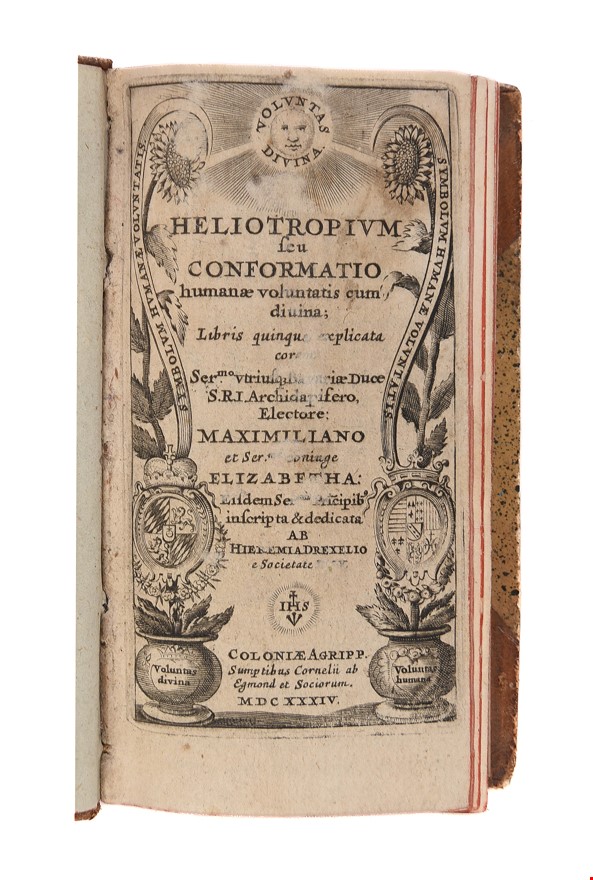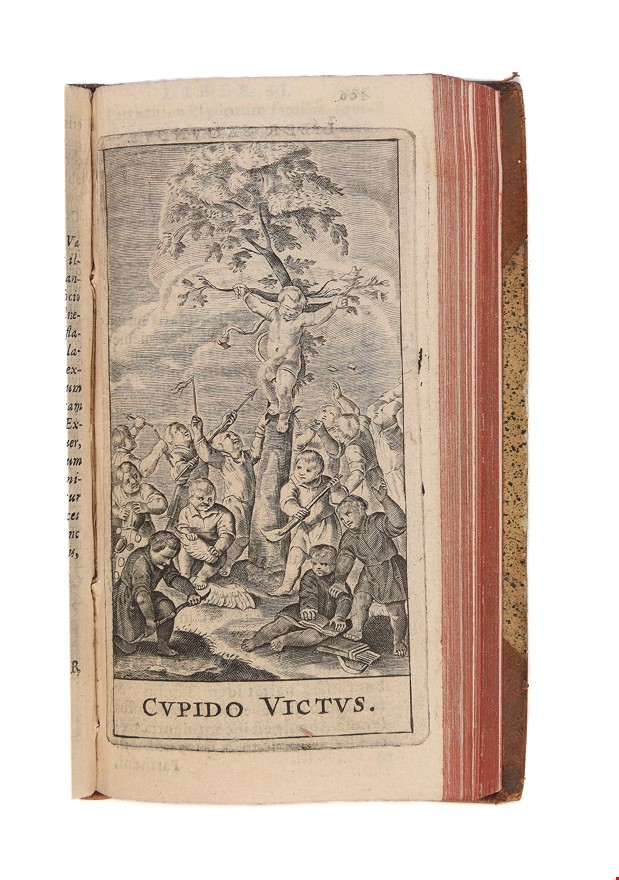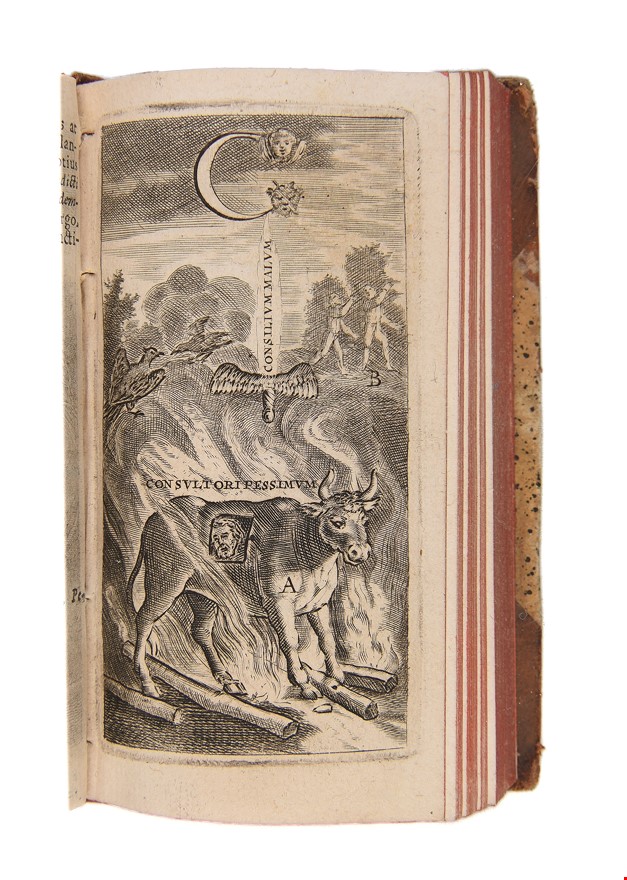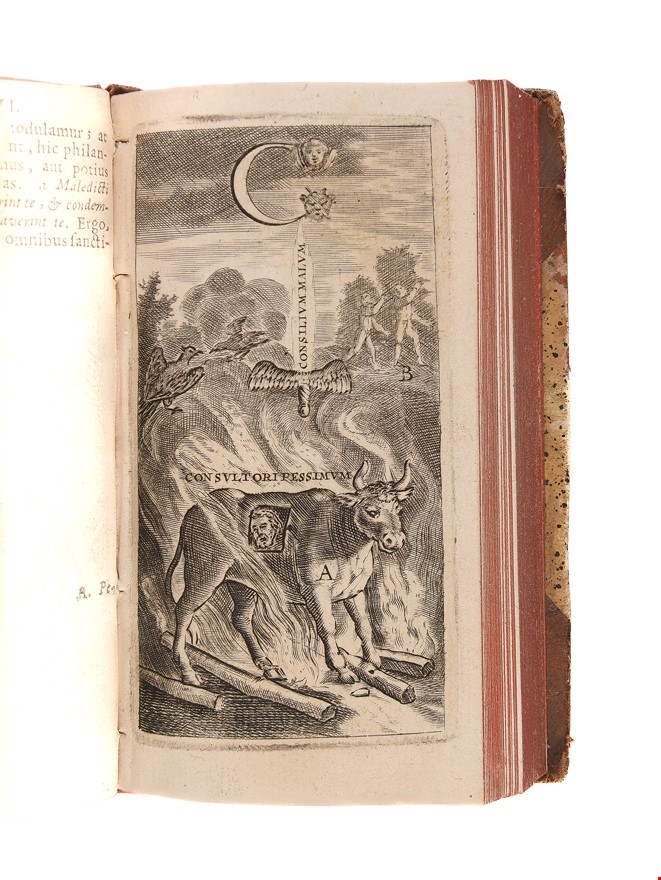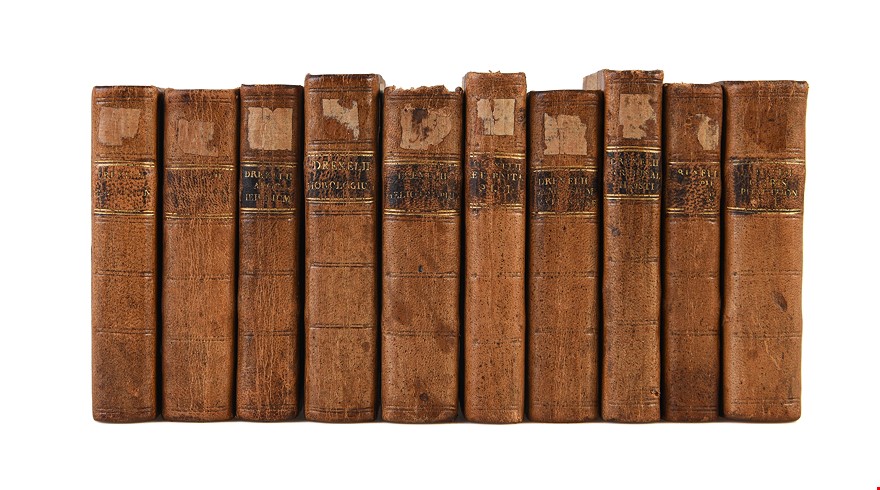[Selected works]. Antwerp, Amsterdam, Cologne & Munich, 1631-
DREXEL Jeremias, SJ (1651)
£1500.00
Please contact us in advance if you would like to view this book at our Curzon Street shop.
Fine emblematic engraved titles to all volumes, some works also illustrated with engravings (see below).
32mo (105 x 55mm). 11 works bound in 9 vols. Uniformly bound in 18th century half-calf, speckled boards, spines lettered in gilt (spines rubbed).
A fine collection of early reprints of the immensely popular devotional works of Jeremias Drexel or Dreschel (1581-1638). Drexel was a Jesuit ascetic, orator, writer and preacher whose writings lent themselves to emblematic illustration and who, himself, favoured imagery as a means of conveying his spiritual message.
All works in this set are illustrated with an emblematic title; eight of the eleven works here contain emblematic engravings in the text, many after the design of the original plates by renowned engraver Raphael Sadeler the Elder, with whom Drexel collaborated closely. Drexel ‘understood that, in the precise context of his writings, illustrations served a number of functions: primarily, as pictorial complements to the text, focal points of devotional meditation and mnemonic aids. As a Bavarian Jesuit, and a figurehead in the liturgical milieu of the seventeenth-century German Baroque, Drexel occupies a major place in the type of culture at once fostered and broadcast by emblematic books. […]’ (Crowe, p.8).
Born a Lutheran, Drexel converted to Catholicism as a boy; later professor of humanities and rhetoric at Augsburg and Dillengen, for 23 years he was court preacher to Maximilian I, Elector of Bavaria. His writings were immensely popular and, as well as Latin and German editions, they were translated into English, Polish, French, Italian, Dutch, Hungarian and even Welsh (De aeternitate considerationis translated by Elis Lewis in 1661; see Crowe, p.6). “His exemplary command of oratory, in concert with an apparently awe-inspiring scholarly reach, is in plentiful evidence in some 34 principal publications, informed as they are not merely with the substance, but driven too by the brio and drama of his pulpit performances. These publications were invariable illustrated with emblematic engravings, and commanded an increasingly extensive readership with each passing year, notably appealing to Protestants as well as Catholics…The orbit of his readers’ catchment was geographically – and denominationally – wide to a conspicuous degree.’ (Crowe, p.1).
Present here are Trismegistus Christianus (Cologne: Egmond, 1631), Horologium auxiliaris tutelaris angeli (Cologne: Egmond, 1645) [bound with:] Nicetas seu triumphata incontinentia (Cologne: Egmond, 1631); Gymnasium patientiae (Cologne: Egmond, 1634), Gazophylacium Christi eleemosyna (Munich, 1651); Heliotropium (Cologne: Egmond, 1634); Aloe amari sed salubris succi (Munich, 1637); De aeternitate considerations (Cologne: Egmond, 1634) [bound with:] Zodiacus christianus (Cologne: Egmond, 1634); Tribunal Christi (Cologne: Egmond, 1635); Ioseph aegypti prorex (Antwerp: widow of Jo. Cnobbart, 1642).
Provenance: stamps of the Jesuit College, Dublin.
Praz pp. 318-20. Landwehr German 231, 234, 236 (1631 ed.), 238 (1627 ed.), 241, 251, 257, 258 (1631 ed.). N.J. Crowe, Jeremias Drexel’s ‘Christian Zodiac’ (2013).
Stock Code: 47952
